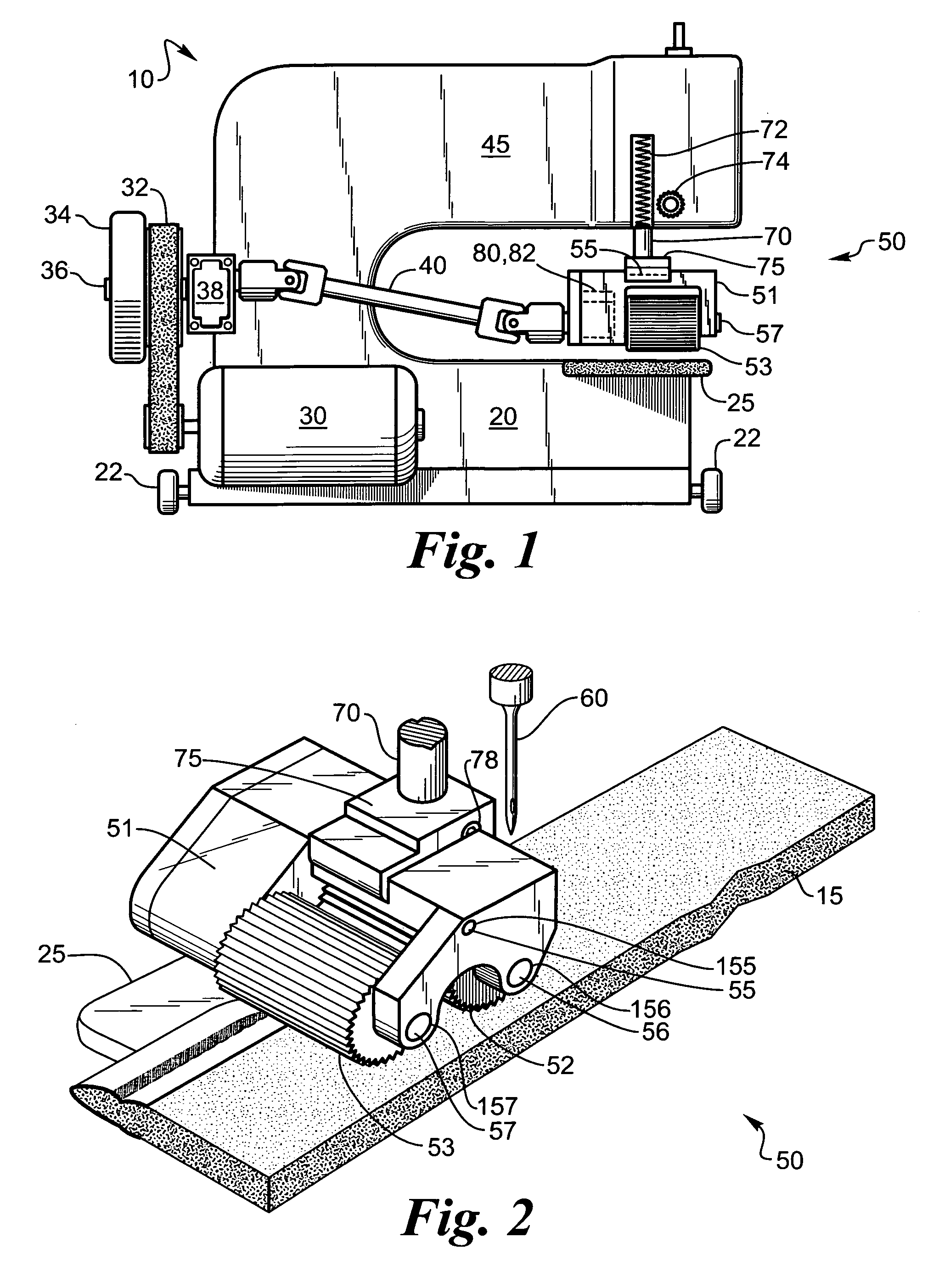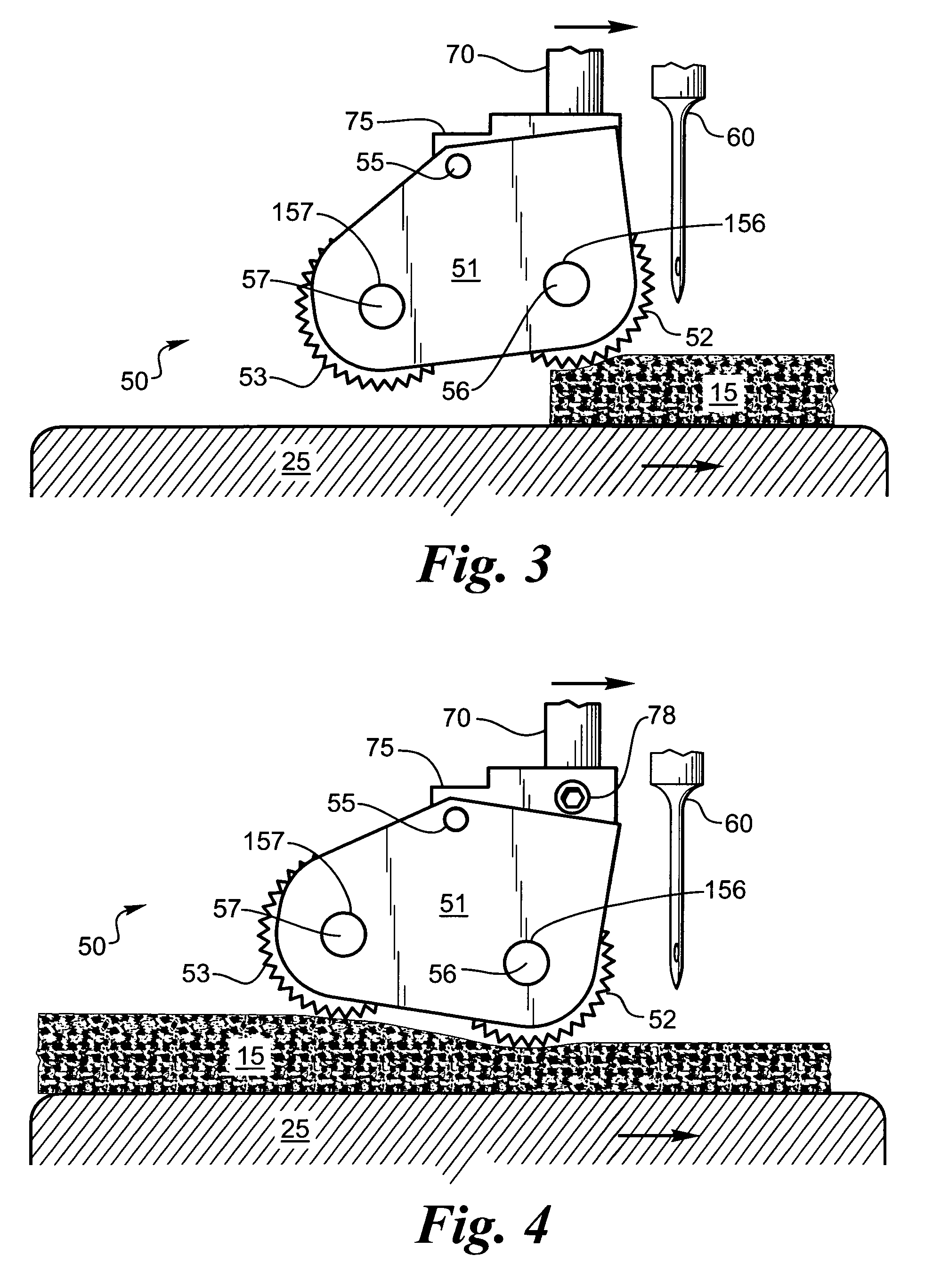Pivoting feed roller
a feed roller and feed roller technology, applied in the field of sewing machines, can solve the problems of affecting affecting the sewing machine, so as to reduce the cost of purchasing a sewing machine, reduce the cost of maintenance, and increase the reliability of the sewing machin
- Summary
- Abstract
- Description
- Claims
- Application Information
AI Technical Summary
Benefits of technology
Problems solved by technology
Method used
Image
Examples
Embodiment Construction
[0033]In laying carpet a sewing machine 10 is sometimes used to add a binding tape to the edge of the carpet 15. The sewing machine 10 can be on wheels 22 and run along the edge of the carpet 15 or the carpet 15 can be run through a stationary sewing machine 10. In either case the carpet 15 has to be fed through the sewing machine 10 with a firm grip on the carpet 15 to advance the carpet 15 with each stitch.
[0034]In general a sewing machine 10 having a frame 20 may optionally have wheels 22 for moving the sewing machine 10 along the edge of a carpet 15. The sewing machine 10 has an electric motor 30 for driving a belt 32, which rotates shaft 36 having a flywheel 34 thereon. Shaft 36 also drives a cam and a one-way clutch bearing mechanism shown generally as box 38, which then drives drive shaft 40 connected to pivoting twin feed roller 50. The a one-way clutch bearing mechanism box 38 also contains a means for allowing a shaft to slide therein to compensate for the up and down moti...
PUM
 Login to View More
Login to View More Abstract
Description
Claims
Application Information
 Login to View More
Login to View More - R&D
- Intellectual Property
- Life Sciences
- Materials
- Tech Scout
- Unparalleled Data Quality
- Higher Quality Content
- 60% Fewer Hallucinations
Browse by: Latest US Patents, China's latest patents, Technical Efficacy Thesaurus, Application Domain, Technology Topic, Popular Technical Reports.
© 2025 PatSnap. All rights reserved.Legal|Privacy policy|Modern Slavery Act Transparency Statement|Sitemap|About US| Contact US: help@patsnap.com



